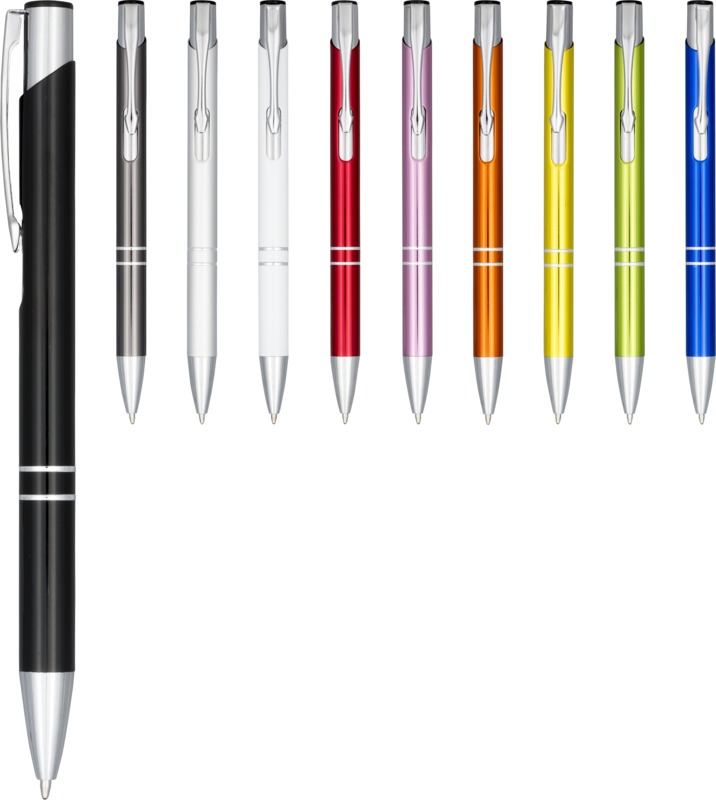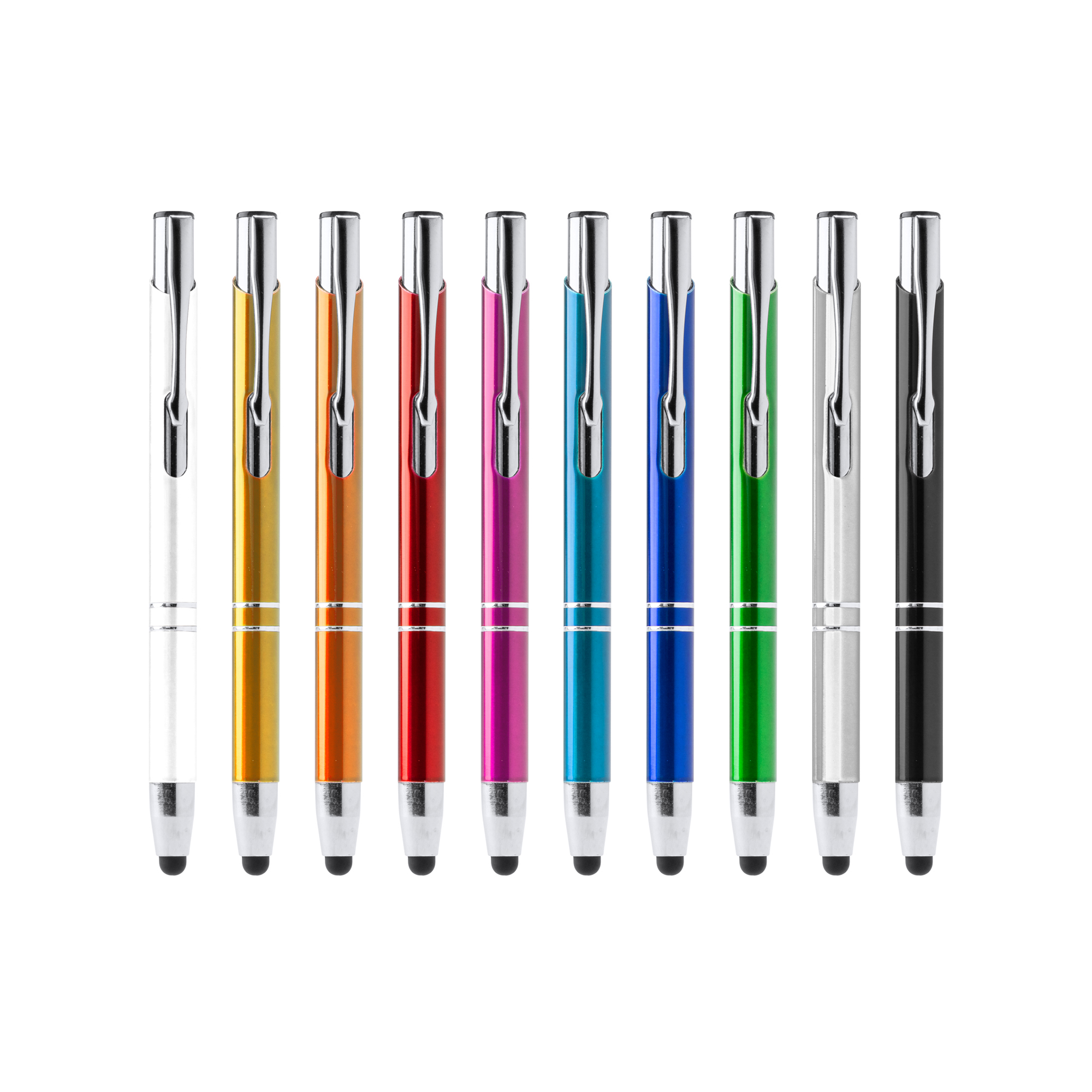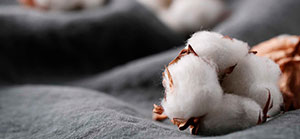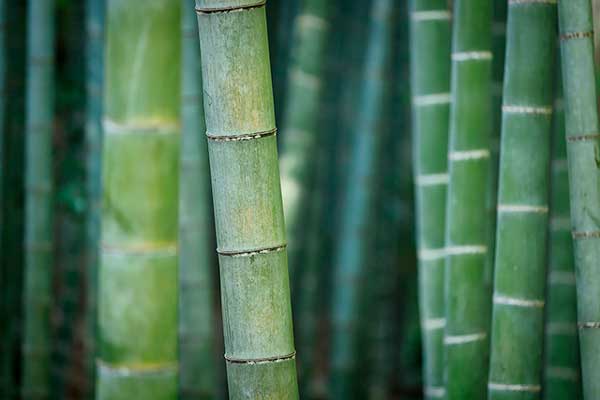What is Aluminium?
It is a versatile material that offers many advantages compared to other metals.
Additionally, aluminium can be easily customised using a variety of marking techniques, making it a popular choice for customised products
Aluminium material is a lightweight metal that plays a significant role in our lives. In its pure state, it is very soft, but with the right alloys, it can achieve a strength similar to stainless steel. It's one of the most abundant chemical elements in the Earth's crust, trailing only oxygen and silicon. Therefore, it's highly unlikely to run out.
It was first isolated in 1825, and thanks to aluminium's unique characteristics, it has managed to prevail over other materials. If you look around, you can easily find it in various objects scattered around, from a soda can to a mobile device.
Origin of Aluminium
Aluminium was first isolated in 1825 by Hans Christian. What's interesting is that, even though it was used earlier, its characteristics were not known or identified until that time. But from that point on, they succeeded in separating entirely pure samples. Thanks to this, we can now understand and use it much more extensively.
Aluminium What is Used For? (Uses of Aluminium)
Aluminium finds applications in very different industries such as aviation, medical, automotive, or electronics, all thanks to its special physical, chemical, and mechanical properties.
Transports
In the transportation sector, it's regularly used for making various components like wheels or suspensions. Its use brings various environmental benefits because its lightness results in lower fuel consumption.
Communications
In the communication industry, it's been significant because it's one of the most cost-effective and efficient ways to transmit electricity.
Constructions
In the construction sector, aluminium has a higher significance than many other components due to its lightweight and strength, and it's increasingly used for decorative purposes.
If you look around your own house, you'll likely find numerous containers made from it. Its lightness, insulating capability, and durability make it perfect for storing both liquid and solid food.
You can also find it in various promotional items. In the world of promotional gifts, it's quite popular, especially for items like aluminium bottles and metal keychains.
What are aluminium types and properties?
Undoubtedly, one of aluminium's major attributes is its lightness, achieved due to its low density. Another characteristic that sets it apart is its malleability, making it easily workable.
It naturally forms an oxide layer, giving it excellent corrosion resistance, which is ideal for products that require protection and preservation. Another remarkable quality is its impermeability.
Furthermore, it's 100% recyclable, and its recycling at the end of its life doesn't require much energy, allowing for the production of the same items again.
Types of Aluminium
As mentioned earlier, aluminium is a lightweight and durable metal used in a variety of applications. Did you know that there are several kinds of aluminium? Let's explain the most common ones: pure aluminium, aluminium alloy, and anodized aluminium.
Pure aluminium
It is the basic type and consists solely of aluminium, making it highly malleable and easy to work with.
However, it's less strong than other aluminium alloys and is primarily used in applications that don't require high strength.
Aluminium alloy
On the other hand, it is produced by mixing aluminium with other metals like copper, magnesium, and zinc. This results in a stronger and more durable material than pure aluminium.
Aluminium alloys are used in a wide range of applications, from aircraft and automotive manufacturing to kitchen utensils and furniture.
Anodized aluminium
Lastly, is a form of aluminium that has undergone an electrolytic process to create an oxide layer on its surface. Anodizing has two significant advantages:
More resistant
Its layer is harder than those obtained by painting with synthetic resins, making it more durable.
It's not affected by sunlight and has excellent corrosion resistance.
More attractive
Anodizing gives aluminium a much more attractive metallic appearance than other organic paints.
The anodized layer is an integral part of the base metal and cannot peel off.
Therefore, anodizing is ideal for applications requiring high corrosion resistance and a good appearance, such as the production of bicycle parts, photography equipment, and even elegant writing materials, like the Moneta pen.
Examples of Products Made with Aluminium
There are numerous aluminium products used as promotional gifts. This isn't surprising because, in addition to providing an elegant and polished finish, they are durable. Moreover, if you want to create a more personalised design with different names using this material, it's possible because it allows laser engraving.
You can find aluminium bottles, such as the double-layered thermal Iceland Bottle, perfect for everyday use, allowing you to accompany your audience. It's the perfect companion for exercise or the office, among many other things, making it the perfect opportunity to reduce the use of disposable bottles.
You can also find metal keychains, bottle openers, and metal pens, traditional gifts that never go out of style, with the added quality of this material. But if you're looking for a tech gift, you can also find power banks batteries. As you can see, the options are limitless and varied.
Best Marking Techniques for Aluminium
There are several marking techniques that can be used on aluminium, depending on the application and the desired finish. Here are some of the most common and popular techniques:

Laser Engraving
This marking technique uses a laser to engrave the design or text directly onto the aluminium. Laser engraving is a high-precision technique that involves engraving on the product's surface, providing an elegant, durable, and high-quality finish.
For aluminium, laser engraving is undoubtedly the best marking technique because it achieves very professional and more durable finishes than other methods.
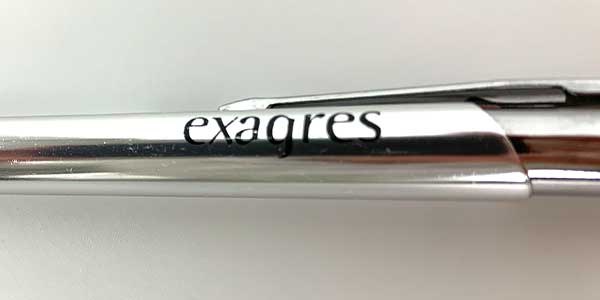
Pad Printing/Tampography
Pad printing is an indirect printing technique used to print designs or texts on irregularly shaped objects or curved surfaces. It involves transferring ink from a printing plate to a silicone pad, which is then transferred to the object to be printed.
It's a special printing technique for small areas and can be used to print on a wide variety of materials. Pad printing also wouldn't be the best option for engraving on aluminium if you want the result to last a long time.
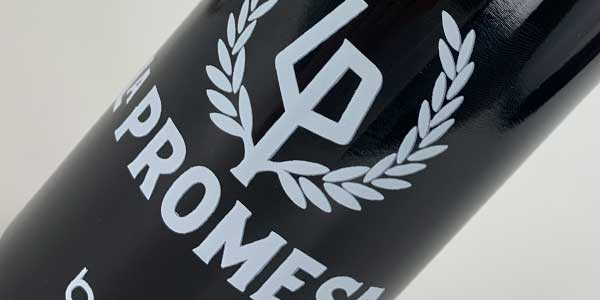
Circular Screen
Printing Circular screen printing is a manual marking method that allows the reproduction of images on round or cylindrical surfaces.
It offers quality color finishes at an economical price. However, it's not the best technique in terms of durability, as the design tends to wear off with use.

Digital Printing
Digital printing uses an inkjet printer to print the design or text on aluminium, in this case.
This technique is suitable for printing detailed and multicoloured designs on flat and curved surfaces. Like circular screen printing, this is also not the best technique in terms of durability.
Differences Between Aluminium and Stainless Steel
Both aluminium and stainless steel are commonly used metals in various industries due to their useful properties. However, there are some important differences between these materials.
Aluminium
Firstly, aluminium is a lighter metal than stainless steel. This makes aluminium a popular choice in applications that require lightweight, such as in the manufacturing of aircraft and automobiles.
Another significant difference between the two materials is their appearance. Aluminium has a matte silver finish.
Stainless steel
On the other hand, stainless steel is stronger and more durable than aluminium. It has greater resistance to corrosion and high temperatures, making it ideal for use in corrosive environments, such as in the manufacture of heavy machinery and kitchen equipment.
Stainless steel has a shinier finish.
Finally, aluminium is generally more affordable than stainless steel, making it a popular choice for budget-conscious applications.
In summary, aluminium is a lightweight and cost-effective metal primarily used in applications requiring lightweight properties, while stainless steel is a stronger and more durable metal used in corrosive environments. Both materials have their own advantages and disadvantages, and the choice of material depends on the specific needs of the application in question.
Why Recycle Aluminium?
Recycling aluminium is a necessary process to save resources. It's a straightforward process; you just need to melt and reshape the aluminium material, which requires much less energy than producing it from scratch. Specifically, it uses only 5% of the energy required for the production of virgin metal. This recycling process started in the 20th century, a practice that increased during World War II.
But it wasn't until the 1960s that its recycling started to become popular and eventually normalized, which promoted the recycling of cans. During recycling, aluminium doesn't lose its properties, which means it can be used as many times as desired.
Can I Put My Aluminium Containers in the Microwave?
It's not advisable to put any type of metallic material inside the microwave, including aluminium foil and any kind of container.
However, recent studies conducted by the European Aluminium Foil Association (EAFA) have claimed that it's possible to heat aluminium containers in the microwave, as long as they are not produced after 1983 and you follow the instructions.
What's the Cost of Aluminium Compared to Other Materials?
By adding a touch of class to the product, aluminium may have a slightly higher price compared to plastic items, but it's not considered an expensive material.
In the end, the quality and aesthetics it offers are worth it, especially if you aim to provide your target audience with a durable product with a quality bonus.
Conclusions
In conclusion, aluminium is a versatile material that offers many advantages compared to other metals. Its high resistance to corrosion, low weight, and excellent thermal and electrical conductivity make it ideal for a wide range of applications.
Furthermore, aluminium can be easily customised using various marking techniques, making it a popular choice for personalised products.
Aluminium is also an environmentally friendly material, as it is recyclable and can be used in the production of sustainable products. Additionally, its low maintenance cost and long lifespan make it an economical and durable choice for many applications.
In summary, if you're looking for a sturdy, lightweight, and customizable material for your products, aluminium is an excellent option.
With its numerous advantages, aluminium is perfect for a wide variety of customised products, from writing materials and identification plates to bottles and electronic product components.

